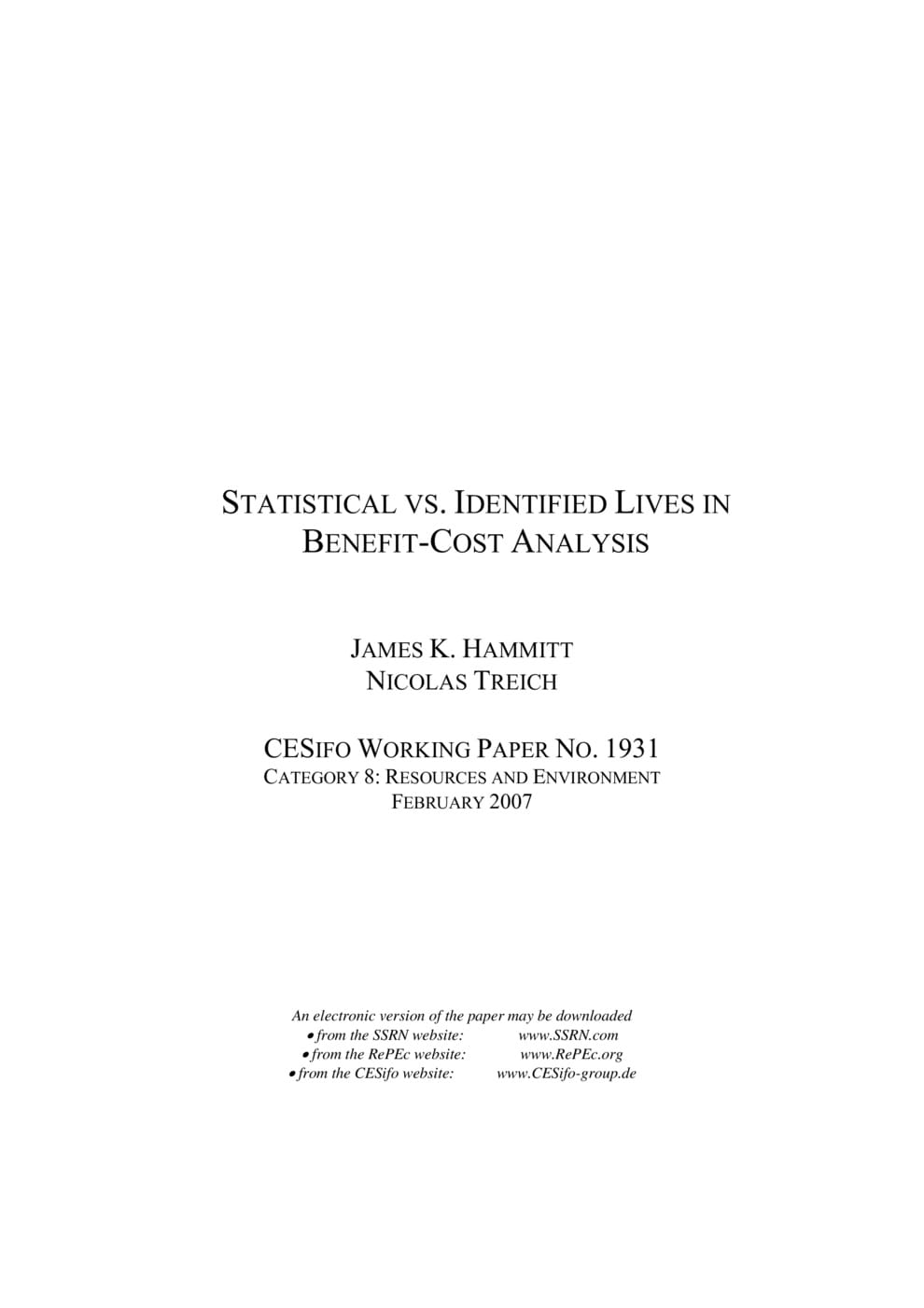Statistical vs. Identified Lives in Benefit-Cost Analysis
CESifo, Munich, 2007
CESifo Working Paper No. 1931

Economic evaluation of projects involving changes in mortality risk conventionally assumes that lives are statistical, i.e., that risks and policy-induced changes in risk are small and similar among a population. In reality, baseline mortality risks and policy-induced changes in risk often differ among individuals although these differences are imperfectly known. We examine the effects of information about heterogeneity of risk on economic evaluation. Although social welfare (defined as aggregate expected utility) is unaffected by information about risk heterogeneity, the economic valuation of changes in risk (the sum of individual compensating or equivalent variations) is sensitive to this information. The effect of information on economic valuation and hence the outcome of a benefit-cost analysis (BCA) depends on: i) whether information is about heterogeneity of the baseline and/or change in risk, ii) whether risk is valued using willingness to pay (WTP) or willingness to accept (WTA) measures, iii) the status quo policy, and iv) whether individuals are risk-averse or risk-neutral in wealth. We show that BCA does not systematically favor identified over statistical lives and suggest some political factors that may explain the apparent public-decision bias toward protecting identified lives.
Resources and Environment